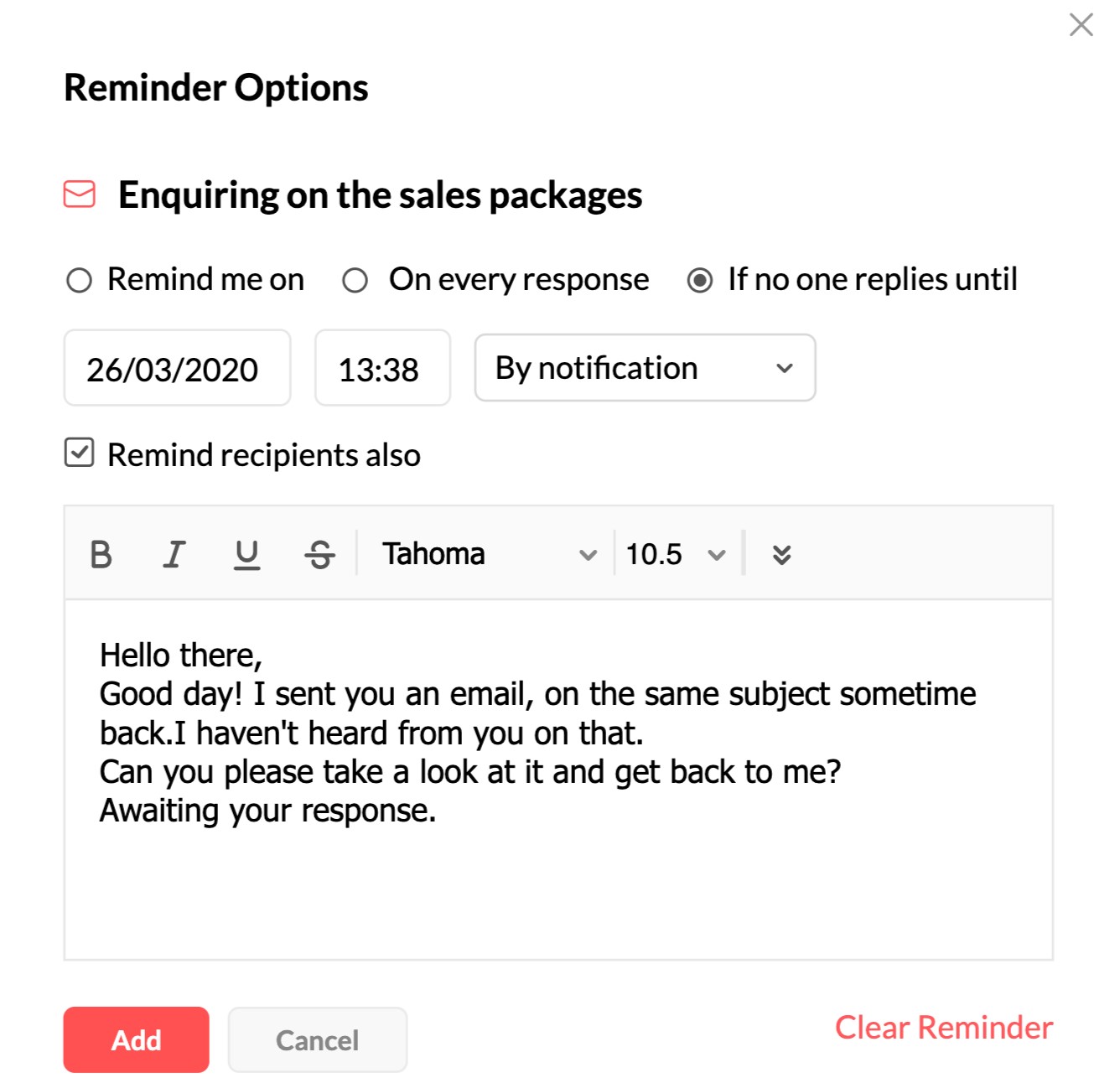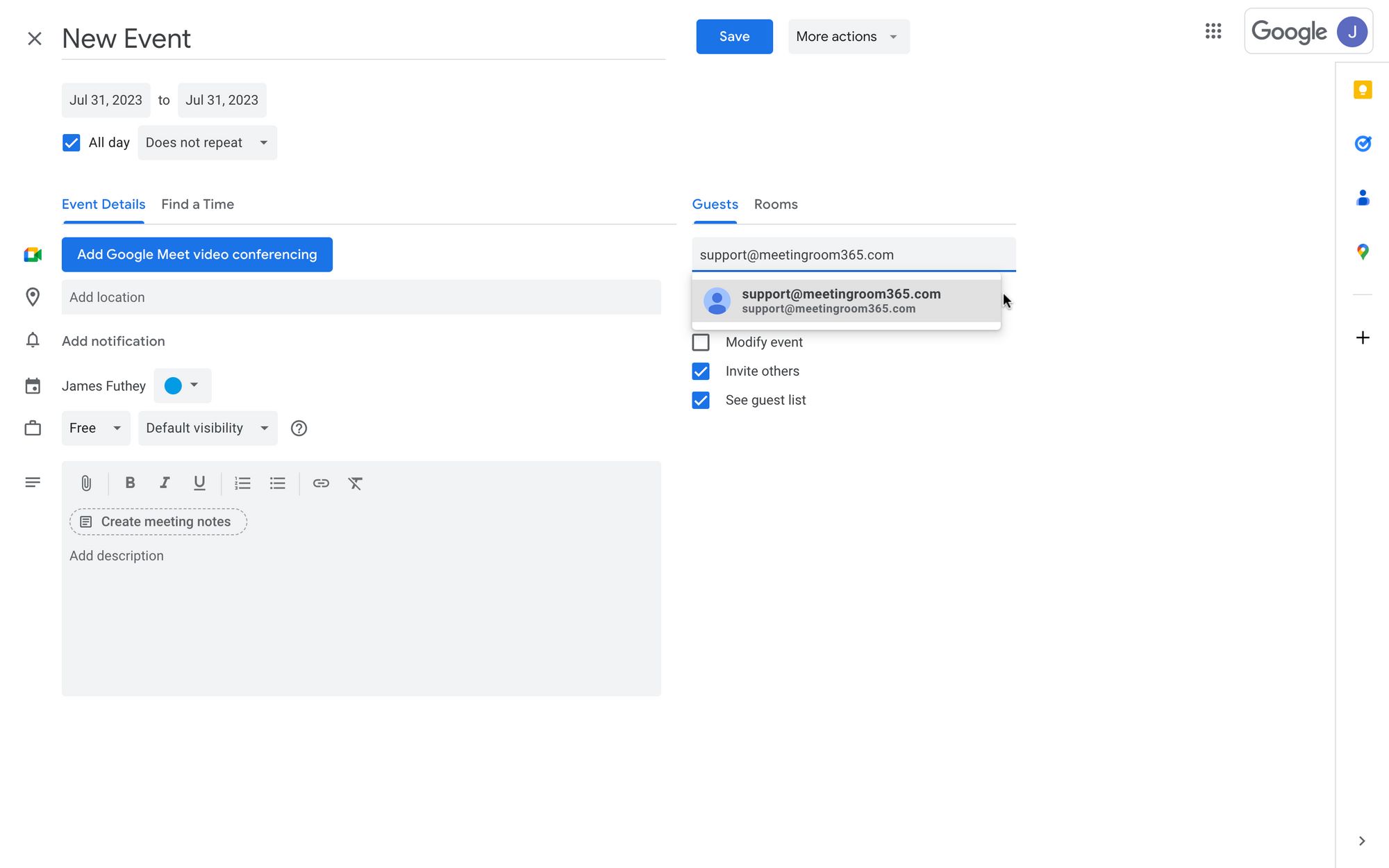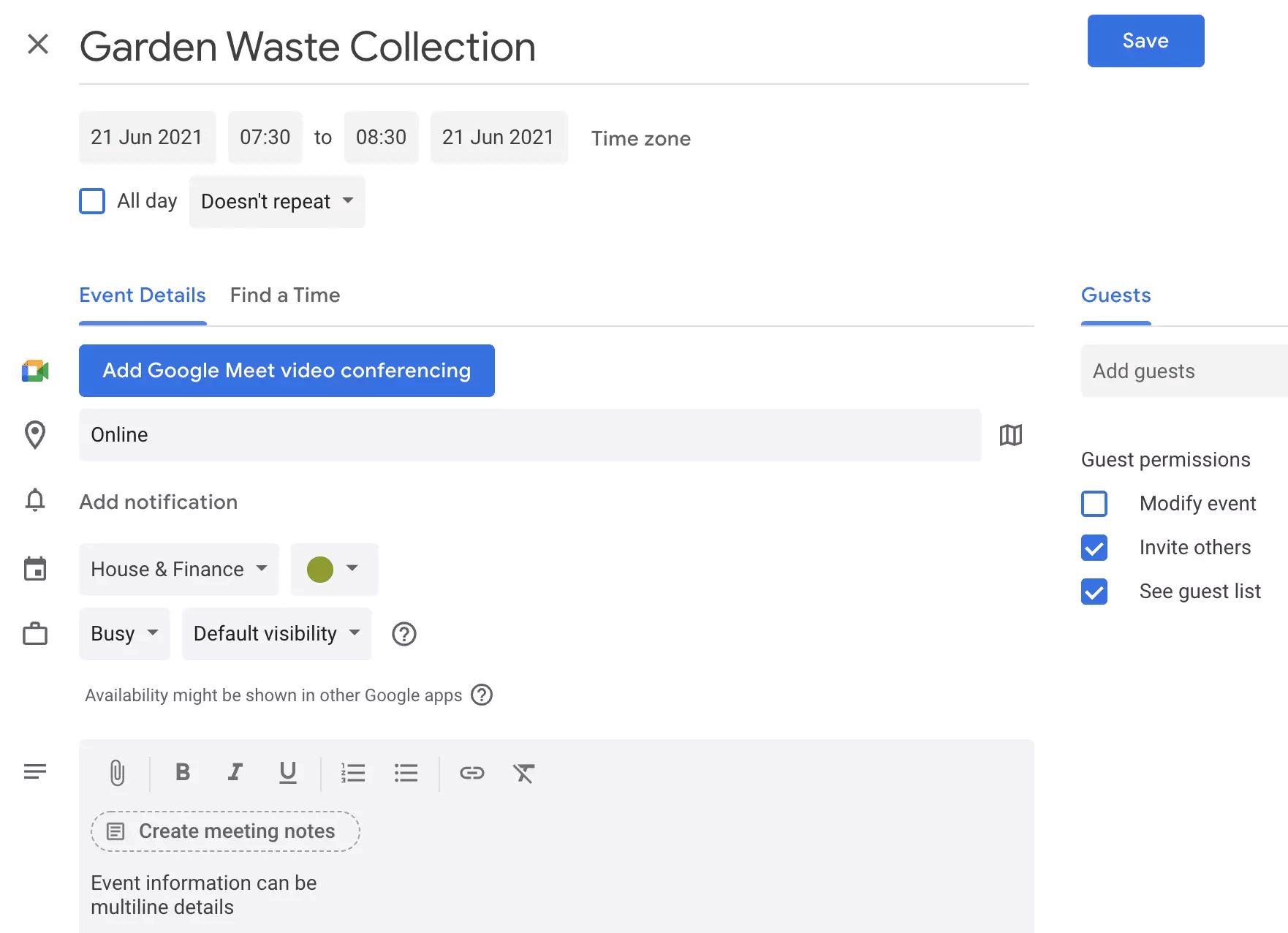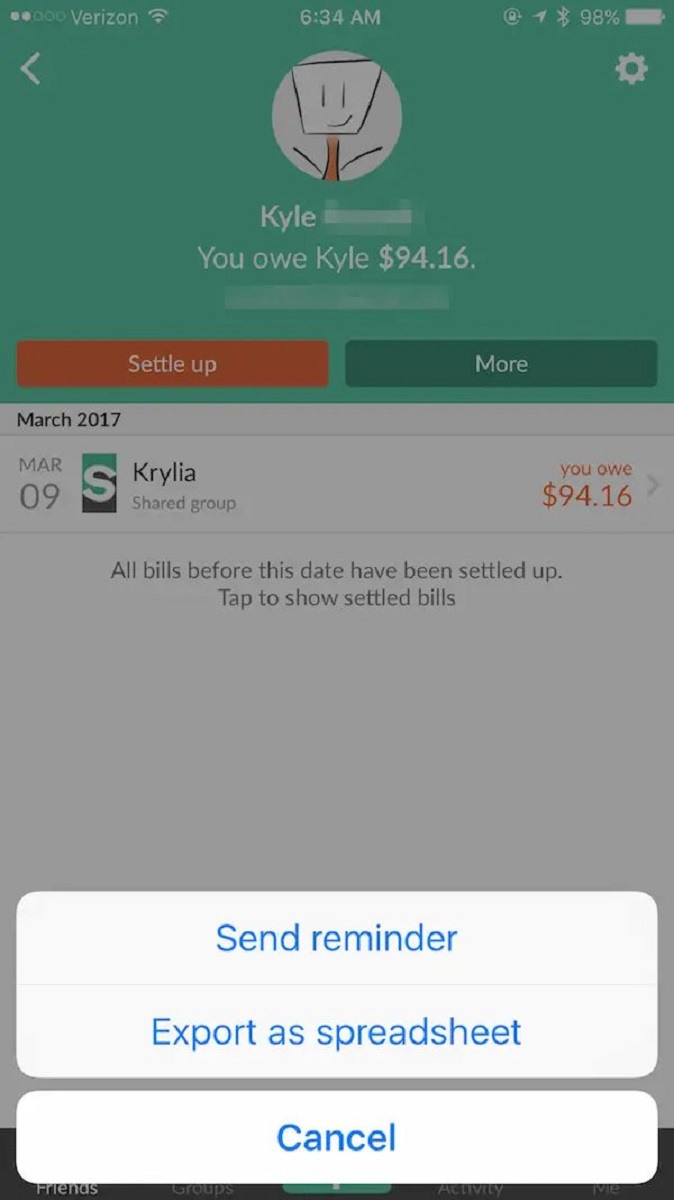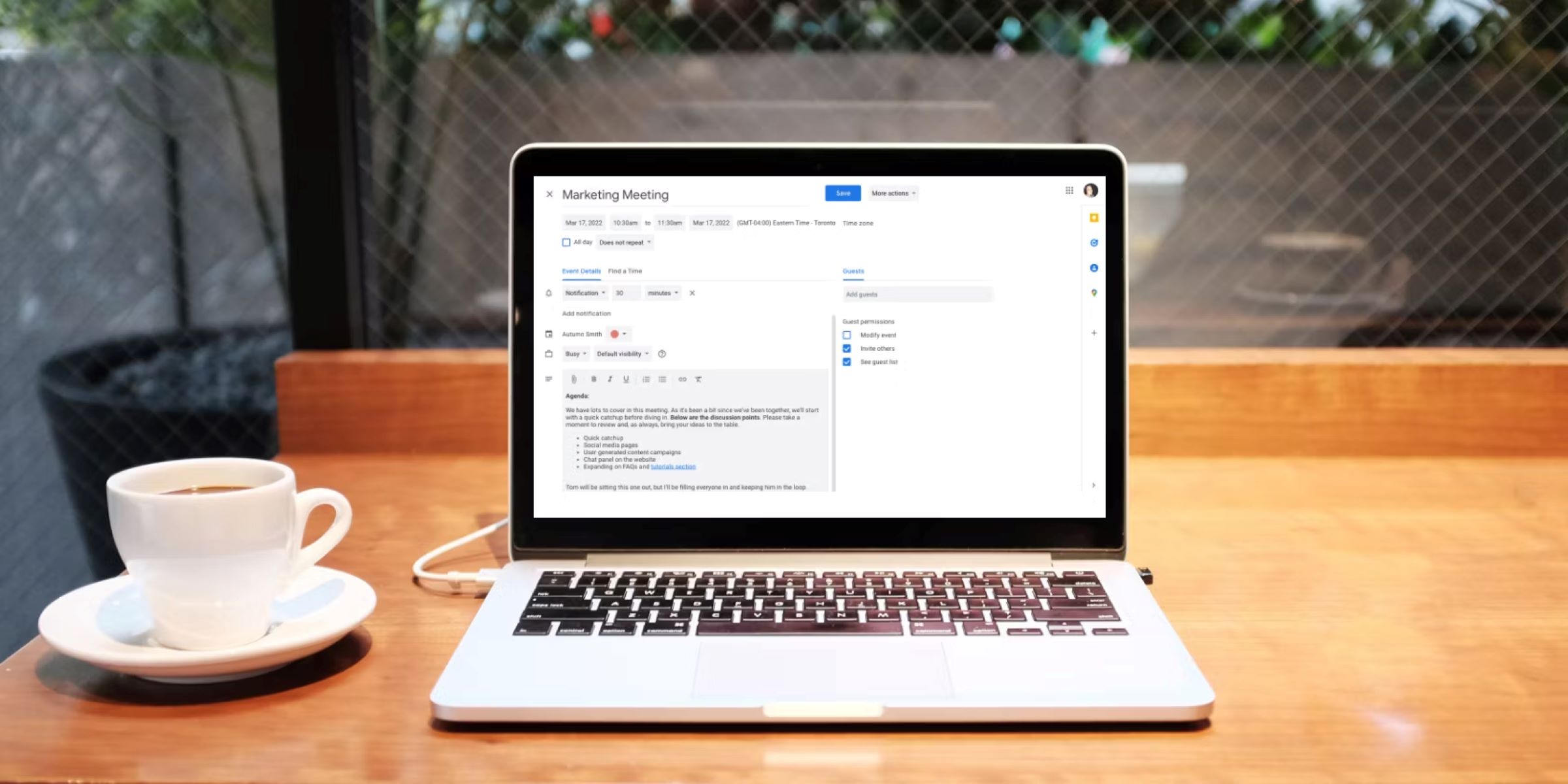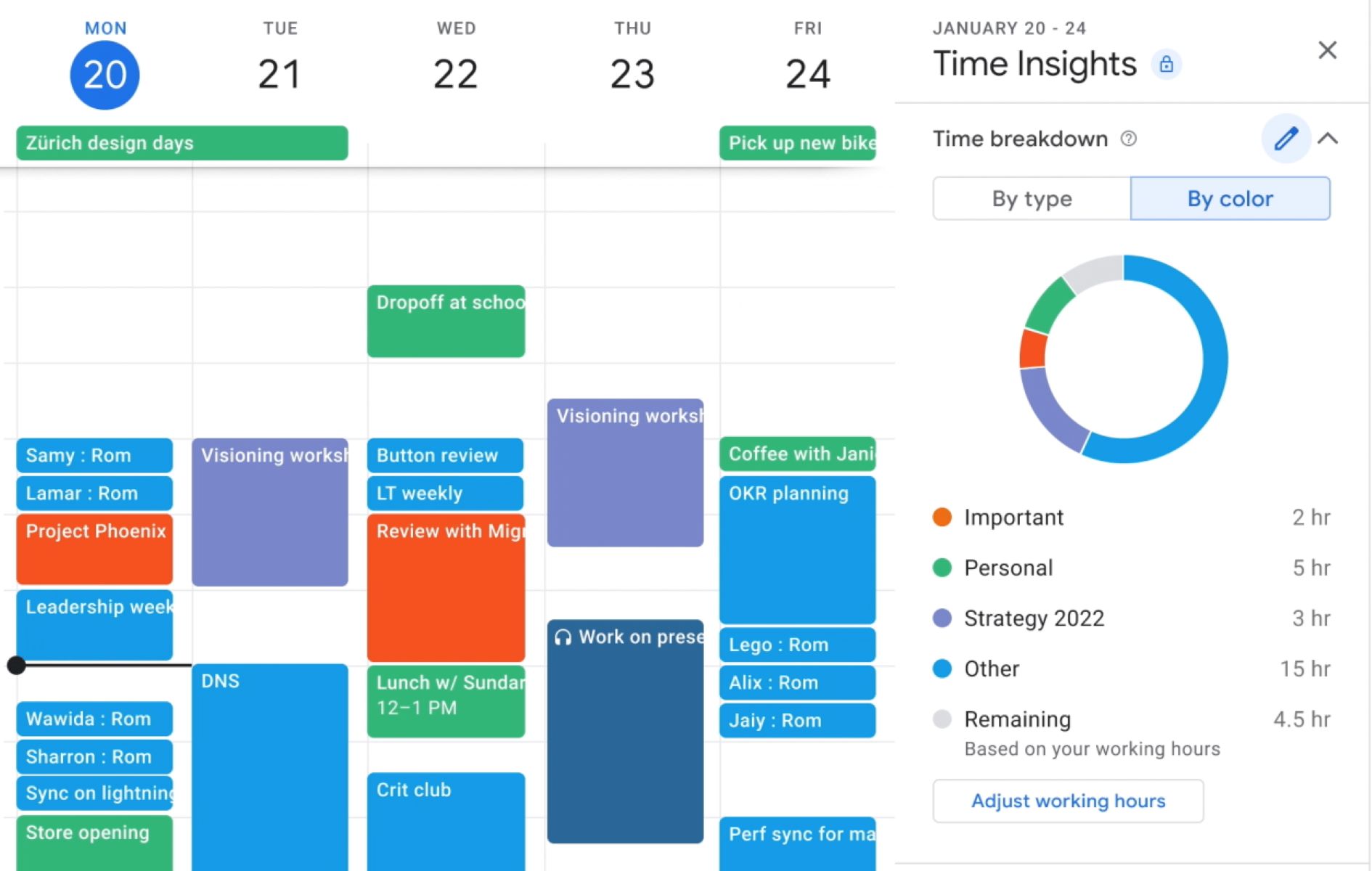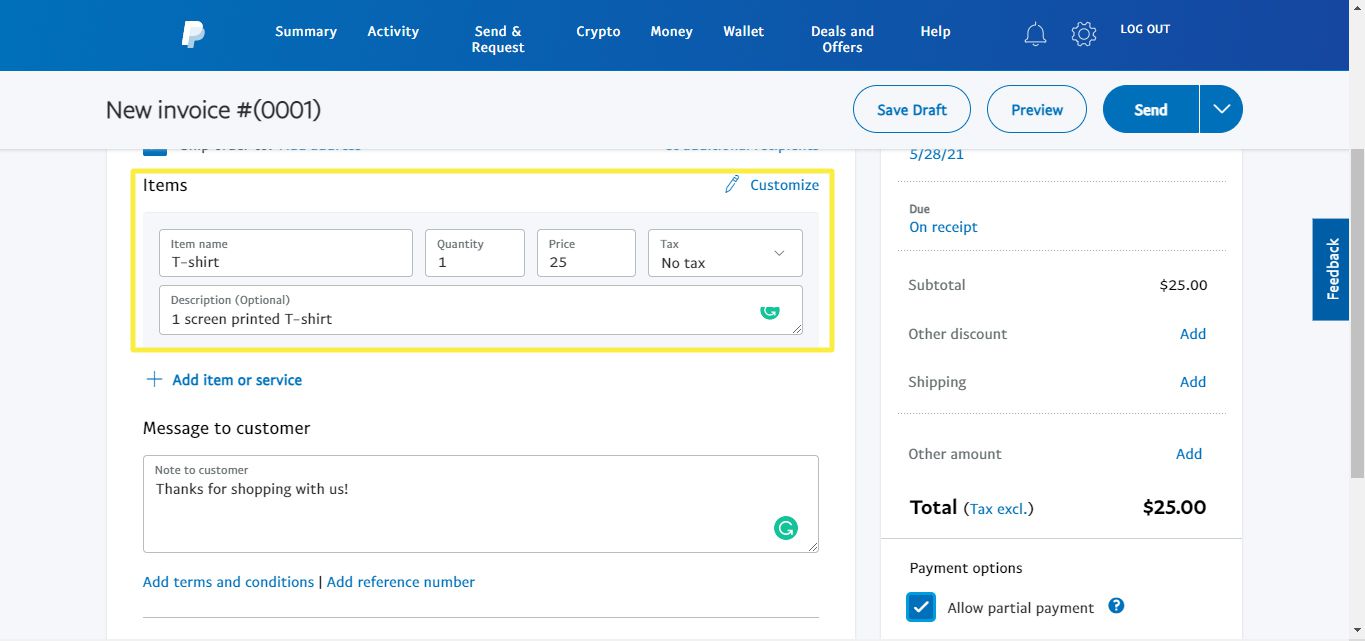Introduction
Welcome to the world of email marketing, where effective communication can make all the difference. In today’s fast-paced digital age, it’s easy for messages to get lost in a sea of cluttered inboxes. That’s why sending a reminder email can be a powerful tool to ensure that your message is heard loud and clear.
A reminder email is a follow-up email that is sent to recipients who have either missed an earlier communication or need a gentle nudge to take action. Whether you run a business and want to remind your customers about an upcoming sale, or you’re managing an event and need to remind attendees of the date and time, a well-crafted reminder email can help you achieve your goals.
But why send a reminder email in the first place? The answer lies in human behavior and the concept of “out of sight, out of mind.” People are bombarded with information from various sources every day, making it easy for your initial message to slip through the cracks. By sending a gentle reminder, you bring your message back into focus, increasing the chances of it being noticed and acted upon.
Furthermore, reminder emails serve as a reliable and cost-effective way to boost engagement, conversions, and ultimately, your bottom line. They provide an opportunity to reconnect with your audience and reinforce the value proposition put forward in your initial communication.
Now that we understand the importance of reminder emails, let’s delve into the best practices for creating an effective one. From determining the ideal timing to crafting persuasive subject lines and structuring the email content, we will cover it all. So, if you’re ready to take full advantage of this powerful marketing tool, let’s get started!
Why Send a Reminder Email?
As mentioned earlier, the digital world is filled with distractions, and people often forget or overlook important messages. That’s where a well-timed and well-crafted reminder email can make a significant impact. Let’s explore some of the key reasons why sending a reminder email is so important:
1. Increase Response Rates: Sometimes, the initial email you send may get buried in a recipient’s inbox or overlooked amidst a flood of other messages. A reminder email serves as a gentle nudge to catch their attention and elicit a response. By reminding them about your previous communication, you increase the chances of them taking action and engaging with your message.
2. Boost Attendance and Participation: If you are organizing an event or webinar, a reminder email can significantly improve attendance. People often forget about upcoming events or lose track of the scheduled dates. Sending a well-timed reminder helps ensure that participants mark their calendars and join your event, maximizing turnout and participation.
3. Reinforce Important Deadlines: Whether you’re collecting RSVPs for an event, managing a project with set deadlines, or trying to secure orders before a limited-time offer expires, a reminder email can serve as a timely reminder of crucial dates. This reinforces the urgency and encourages recipients to take action before it’s too late.
4. Foster Customer Engagement: For businesses, reminder emails can be an effective way to nurture relationships and encourage repeat engagement. By reminding customers about upcoming promotions, new product launches, or even abandoned shopping carts, you stay top of mind, increase brand visibility, and foster ongoing engagement.
5. Personalize the Customer Experience: Reminding customers about their past interactions or purchases shows that you value their business. This personal touch can help strengthen the relationship and increase customer loyalty. By customizing reminder emails with relevant content, recommendations, or exclusive offers, you create a personalized experience that resonates with your audience.
6. Improve Conversion Rates: In many cases, a reminder email can be the extra push needed to convert a prospect into a buyer. Whether it’s reminding potential customers about items left in their cart or offering a limited-time discount on a purchase they showed interest in, a well-executed reminder can significantly improve conversion rates.
Remember, the key to a successful reminder email lies in striking the right balance between being informative and persuasive without being too pushy or repetitive. In the next section, we will explore when it’s appropriate to send a reminder email.
When to Send a Reminder Email
Timing is crucial when it comes to sending a reminder email. You want to strike a balance between ensuring that the recipient has had enough time to act on your initial message and not overwhelming them with too many reminders. Here are some key factors to consider when determining the ideal time to send a reminder email:
1. Timeframe: Consider the nature of your message and the urgency of the action required. If it’s a time-sensitive issue, such as a limited-time offer or an event with a specific date, sending a reminder a few days before the deadline is usually effective. However, for less time-sensitive matters, allow for a reasonable gap before sending a reminder to avoid appearing overly pushy.
2. Audience and Frequency: Understand your target audience and their preferences. Some recipients may appreciate a reminder just a couple of days after the initial email, while others might find it intrusive. Additionally, consider the frequency of your reminders. Bombarding recipients with daily or multiple reminders can come across as spammy and result in them unsubscribing or ignoring your messages altogether. Strike a balance by sending relevant reminders sparingly.
3. Engagement Patterns: Assess the recipient’s previous engagement history to gauge their responsiveness. If they have consistently responded or engaged promptly in the past, a gentle reminder sooner rather than later might be appropriate. On the other hand, if they have typically taken longer to respond, allow for a longer gap before sending a reminder.
4. Event-Based Triggers: Consider triggering your reminder email based on specific events or actions. For instance, if someone added items to their cart but did not complete the purchase, sending a reminder within 24-48 hours can help minimize cart abandonment. Similarly, for event registrations, sending a reminder a week before the event and a final one a day or two prior can help maximize attendance.
5. Time of Day: Experiment with different times of the day to find the optimal time for sending your reminder email. Avoid early morning or late evening, as recipients may be less likely to pay attention during those times. Mid-morning or mid-afternoon tend to be good options, when people are actively checking and responding to their emails.
Keep in mind that every situation is unique, and what works for one campaign may not work for another. Analyze metrics such as open rates, click-through rates, and conversions to fine-tune your timing strategy. The key is to find the sweet spot that maximizes engagement without overwhelming your audience.
In the next section, we will provide you with valuable tips for writing an effective reminder email that grabs attention and drives action.
Tips for Writing an Effective Reminder Email
Writing a compelling reminder email requires careful consideration of the content and structure. Here are some valuable tips to help you create an effective reminder email that grabs attention and drives action:
1. Keep it concise: Remember that people have limited time and attention spans. Keep your reminder email concise and to the point. Avoid lengthy paragraphs and get straight to the purpose of your message. Use short sentences and bullet points to make the information easily scannable.
2. Use a friendly but professional tone: Maintain a friendly and approachable tone in your reminder email. Avoid sounding too formal or robotic. Use conversational language to establish a connection with the reader. However, ensure you maintain a professional tone and avoid being overly informal.
3. Highlight the value proposition: Remind recipients of the value they will receive by taking action or attending the event. Clearly communicate the benefits, incentives, or rewards they can expect. Showcase how your offer or event aligns with their needs and motivates them to act.
4. Add a sense of urgency: Create a sense of urgency in your reminder email to prompt recipients to take immediate action. Highlight limited-time offers, approaching deadlines, or dwindling availability to convey that they need to act quickly to avoid missing out on something valuable.
5. Personalize the message: Use personalization techniques to make the reminder email more relevant to the recipient. Address them by name and refer to any previous interactions or specific context that shows you understand their needs. Personalization adds a personal touch and makes the email feel more tailored to their interests.
6. Include a clear call to action (CTA): Make it easy for recipients to take the desired action by including a prominent and well-defined call-to-action button or link. Use action-oriented language that motivates them to click and clearly specify what they need to do next.
7. Optimize for mobile: Keep in mind that many people access their emails on mobile devices. Ensure your reminder email is mobile-friendly by using a responsive design, using a legible font size, and organizing the content in a way that is easy to read and digest on smaller screens.
8. Proofread and test: Before sending out your reminder email, double-check for any typos, grammatical errors, or formatting issues. Test the email across different email clients and devices to ensure it appears as intended. A polished and error-free email increases your professionalism and enhances the recipient’s perception of your brand.
9. Set up automated reminders: Leverage email marketing tools to set up automated reminder emails. This helps streamline the process and ensures timely delivery of reminders. You can schedule the reminders based on predefined triggers or intervals, saving you time and effort.
By incorporating these tips into your reminder email strategy, you’ll increase the likelihood of capturing recipients’ attention, triggering their interest, and ultimately achieving the desired response. Next, we will discuss the proper structure of a reminder email to help you organize your content effectively.
Structure of a Reminder Email
A well-structured reminder email not only improves readability but also enhances the chances of recipients taking the desired action. Here is a recommended structure for a reminder email:
1. Greeting: Start your reminder email with a personalized greeting using the recipient’s name. This sets a friendly tone and makes the email feel more personal and engaging.
2. Reminder of previous communication: Begin by briefly reminding the recipient about your previous email or interaction. This helps jog their memory and establishes context for the reminder.
3. Value proposition: Reinforce the value proposition and emphasize the benefits they will receive by taking the desired action. Clearly communicate how your offer, event, or request aligns with their needs and solves a problem they may have.
4. Call to action: Clearly state the specific action you want the recipient to take and provide a clear and prominent call-to-action button or link. Make it easy for them to take the desired action by ensuring the CTA stands out visually and is easily clickable.
5. Additional details: Provide any additional relevant details or information that can help the recipient make an informed decision. This could include event dates and times, important deadlines, specific product information, or any other details that can assist in their decision-making process.
6. Sense of urgency: Create a sense of urgency by highlighting any applicable time restrictions, limited availability, or approaching deadlines. This encourages recipients to take immediate action instead of putting it off for later.
7. Contact information: Include your contact information, such as your email address or phone number, in case the recipient has any questions, concerns, or needs additional assistance. This shows that you are accessible and willing to help address any concerns they may have.
8. Closing: Conclude your reminder email with a polite and friendly closing. This could be a simple “Thank you” or a more personalized closing statement. Sign off with your name or the name of your organization to add a personal touch.
9. Signature: Include a professional email signature that includes your name, title, and relevant contact information. This adds credibility and makes it easier for the recipient to reach out to you if needed.
10. Follow-up plan: If appropriate, mention any future follow-up plans or actions you will take if the recipient does not respond or take the desired action within a certain time frame. This communicates your commitment to the interaction and helps set expectations.
Keeping your reminder email concise, structured, and focused will increase the chances of recipients engaging with your message and taking the desired action. In the next section, we will provide tips for creating attention-grabbing subject lines for your reminder emails.
Subject Line Tips for Reminder Emails
The subject line of your reminder email is crucial for grabbing the recipient’s attention and motivating them to open your message. Here are some effective tips to create attention-grabbing subject lines:
1. Be clear and concise: Keep your subject line short and to the point. Clearly communicate the purpose of the email and what action you are reminding the recipient to take. Avoid vague or ambiguous subject lines that may confuse or mislead the reader.
2. Create a sense of urgency: Use words or phrases that convey a sense of urgency, prompting recipients to open the email and take immediate action. Incorporate words like “urgent,” “time-sensitive,” or “limited time” to create a sense of importance and encourage prompt attention.
3. Customize and personalize: Personalize the subject line by including the recipient’s name, if possible. This can help to catch their attention and make the email feel more relevant to them. Customization adds a personal touch and increases the chances of the email being opened.
4. Mention the time or deadline: If your reminder email is time-sensitive, include the deadline or event date in the subject line. This immediately indicates the urgency and importance of the email, prompting recipients to open the email without delay.
5. Highlight the value proposition: Use the subject line to emphasize the value or benefit that the recipient will gain by opening and engaging with the email. Clearly communicate how their action can benefit them, tapping into their motivation to take the desired action.
6. Use action-oriented language: Incorporate strong action verbs or phrases that encourage recipients to take action. Words such as “Reminder,” “Don’t miss out,” or “Last chance” can create a sense of FOMO (fear of missing out) and drive recipients to open the email and act promptly.
7. A/B test your subject lines: Conduct A/B testing by creating multiple subject lines for your reminder email and testing their performance. This allows you to compare open rates and click-through rates to determine which subject line resonates best with your audience. Use this data to refine and optimize future email campaigns.
8. Avoid spam triggers: Steer clear of using words or phrases that may trigger spam filters and cause your email to end up in the recipient’s spam folder. Certain words like “free,” “discount,” or excessive use of exclamation marks can be red flags to spam filters and decrease the likelihood of your email being seen.
9. Be mindful of character length: Keep in mind that some email clients or mobile devices may truncate subject lines that are too long. Aim to keep your subject line within 30-50 characters to ensure the full message is visible and impactful.
Remember to test different subject lines and consistently track the performance of your reminder emails. What works for one campaign might not work for another, so it’s important to learn from your data and continuously iterate to improve open rates and engagement.
In the next section, we will explore the key elements to include in a reminder email to maximize its effectiveness.
Key Elements to Include in a Reminder Email
When crafting a reminder email, several key elements should be included to ensure that your message gets noticed and effectively communicates the desired action. Let’s explore these essential elements:
1. Clear and concise subject line: Start with a subject line that clearly conveys the purpose and urgency of the email. This helps grab the recipient’s attention and encourages them to open the message.
2. Personalized greeting: Begin your email with a personalized greeting that addresses the recipient by name. This creates a sense of connection and makes the email feel more tailored and relevant to the individual.
3. Reminder of previous communication: Refresh the recipient’s memory by briefly mentioning the previous communication or interaction that the reminder is referring to. This helps establish context and reminds them of the specific action you are reminding them about.
4. Value proposition: Reinforce the value and benefits that the recipient will gain by taking the desired action. Clearly communicate how their involvement or participation can positively impact their lives or solve a problem they may have.
5. Call to action: Provide a clear and specific call-to-action that outlines the step you want the recipient to take. Use action-oriented language and make it easy for them to understand what they need to do next.
6. Additional details and information: Include any important details or information that supports the call to action. This may include event dates, times, locations, special instructions, or any relevant information that can help recipients make an informed decision or take the desired action.
7. Sense of urgency: Create a sense of urgency by emphasizing any time-sensitive aspects of your reminder. Highlight approaching deadlines, limited availability, or any other factors that will prompt the recipient to act promptly rather than putting it off for later.
8. Contact information: Provide your contact information, such as an email address or phone number, in case the recipient has any questions or needs further assistance. This shows that you are accessible and willing to help address any concerns they may have.
9. Polite and friendly closing: Conclude your email with a polite and friendly closing statement. Thank the recipient for their time and consideration, and sign off with your name or the name of your organization to add a personal touch.
10. Professional email signature: Include a professional email signature that includes your name, title, and relevant contact information. This adds credibility and makes it easier for the recipient to reach out to you if needed.
11. Visual elements (optional): If appropriate, consider including relevant visual elements such as images, infographics, or videos to enhance the appeal and engagement of your reminder email. Visuals can help grab attention and make your message more memorable.
By including these key elements in your reminder email, you will provide a clear and compelling message that prompts the recipient to take action. In the next section, we will discuss common mistakes to avoid when crafting reminder emails.
Common Mistakes to Avoid in Reminder Emails
When creating reminder emails, it’s important to be aware of common mistakes that can hinder their effectiveness. By avoiding these pitfalls, you can increase the chances of your reminder email achieving its intended purpose. Let’s explore some common mistakes to steer clear of:
1. Being too vague: One common mistake is not clearly communicating the purpose of the reminder email. Make sure your email clearly states what action or event the reminder refers to, providing specific details and instructions.
2. Overloading with information: While it’s important to provide relevant details, avoid overwhelming the recipient with an excessive amount of information. Focus on the essential points and keep your content concise and to the point.
3. Using a generic approach: Personalization is key. Avoid using a one-size-fits-all approach by neglecting to address the recipient by name or failing to tailor the message to their specific needs or interests. Take the time to personalize your reminder emails for a more meaningful connection.
4. Neglecting to create urgency: Failing to convey a sense of urgency can result in your reminder email being overlooked or set aside for later. Use persuasive language and incorporate time-sensitive indicators to encourage prompt action.
5. Sending too many reminders: Bombarding recipients with multiple reminder emails can be counterproductive and annoying. Find the right balance between reminding them without being overbearing or spammy. Sending too many reminders can lead to unsubscribes or a negative perception of your brand.
6. Ignoring mobile optimization: With the increasing use of mobile devices, failing to optimize your reminder emails for mobile can result in a poor user experience. Ensure your emails are mobile-friendly by using responsive design and testing them across various devices and email clients.
7. Neglecting testing and proofreading: Sending out reminder emails without proper testing and proofreading can result in embarrassing errors or formatting issues. Always double-check your emails for spelling mistakes, broken links, or missing content before hitting the send button.
8. Lack of a clear call to action: Ensure that your reminder email includes a specific and noticeable call to action. Clearly communicate what you want the recipient to do and provide an easy-to-follow link or button to facilitate their action.
9. Forgetting to follow up: Sometimes recipients may not take immediate action even after receiving a reminder. Having a follow-up plan in place can help you reconnect with those who have not responded and provide them with additional reminders or incentives to take the desired action.
10. Not analyzing and learning from data: Make sure to analyze the performance of your reminder emails by tracking metrics such as open rates, click-through rates, and conversion rates. Use this data to gain insights and continually improve the effectiveness of your reminder email campaigns.
By avoiding these common mistakes, you can create reminder emails that are engaging, effective, and successful in driving the desired response. In the next section, we will provide examples of effective reminder emails for inspiration.
Examples of Effective Reminder Emails
Looking for inspiration to create your own effective reminder emails? Here are a few examples that showcase different approaches and tactics:
1. E-commerce Reminder Email:
Subject: Don’t miss out on your 20% off discount!
Hi [Name],
We noticed that you added some items to your cart but haven’t completed your purchase yet. Just a friendly reminder that you can still enjoy a 20% discount on your order. Hurry, the offer expires in 24 hours!
Click here to complete your purchase and claim your discount: [CTA Button]
If you have any questions or need assistance, feel free to reach out to our customer support team at [Contact Information].
Thanks, and happy shopping!
The [Company Name] Team
2. Event Reminder Email:
Subject: We’re excited to see you at our upcoming seminar!
Hello [Name],
We wanted to remind you about the seminar on [Event Date] that you’ve registered for. Our expert speakers will be sharing valuable insights on the latest industry trends and strategies. Remember, seats are limited, so make sure to reserve your spot soon.
Event Details:
- Date: [Event Date]
- Time: [Event Time]
- Location: [Event Location]
Looking forward to meeting you at the event and sharing a great learning experience together!
Best regards,
The [Company/Organization Name] Team
3. Subscription Renewal Reminder Email:
Subject: Renew Your Subscription and Keep Enjoying Exclusive Benefits
Dear [Name],
We hope you’ve been enjoying the perks of your [Product/Service] subscription. Just a friendly reminder that your subscription is set to expire in 7 days. By renewing now, you can continue to access exclusive features, discounts, and updates.
Renew your subscription today to avoid any interruptions:
[CTA Button]If you have any questions or need assistance, our support team is here to help. Feel free to reach out to us at [Contact Information].
Thank you for being a valued member of our community!
Sincerely,
The [Company Name] Team
Remember, these are just examples to provide you with ideas and inspiration. Customize and adapt them to fit your unique brand voice, audience, and specific goals for your reminder emails.
In the next section, we will wrap up our guide and summarize the key takeaways for crafting effective reminder emails.
Conclusion
Effective reminder emails play a crucial role in ensuring that your messages are noticed, actions are taken, and goals are accomplished. By implementing the tips and strategies discussed in this guide, you can create reminder emails that stand out in crowded inboxes and drive the desired response from your recipients.
Remember to keep your reminder emails concise, personalized, and value-driven. Craft attention-grabbing subject lines, structure your emails effectively, and include key elements such as clear calls to action and a sense of urgency. Avoid common mistakes, test your emails, and analyze data to continually optimize your approach.
Whether you’re running a business, organizing an event, or communicating with subscribers, reminder emails can significantly improve engagement, attendance, conversion rates, and customer loyalty. By using persuasive language, highlighting the value proposition, and personalizing your messages, you can create a positive and impactful experience for your recipients.
So, go ahead and put these guidelines into practice. Experiment, learn from your experiences, and refine your reminder email strategy over time. Remember, effective communication is a continuous process, and the more you tailor your emails to the needs and preferences of your audience, the better results you’ll achieve.
Now, armed with the knowledge and insights from this guide, it’s time to craft compelling reminder emails that captivate your recipients and drive the desired action. Good luck!







